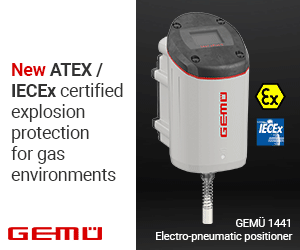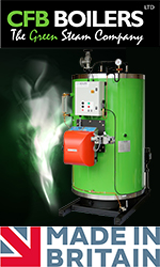Feedwater Optimisation Manual Vs Automatic Dosing Regulation
Diaphragm driven metering pumps have been the stalwart choice for dosing treatment chemicals ever since the Economic Boiler replaced the Lancashire and Cornish boilers.
Once the stroke length and stroke rate have been manually adjusted they are left to quietly get on with dosing chemicals with minimum intervention. To err on the side of caution, they always need to be set at a higher dosing rate than the theoretical to provide a ‘Buffer’ against variations in steam load and feedwater temperature.

However, not only does the excess chemicals increase the chemical bill, there is also a significant increase in the amount of fuel and water consumed due to the higher blowdown rate as a consequence of the excess chemicals.
On a 10,000kgs/hr steam requirement that can equate to a 6.2% increase in blowdown at an annual cost of £33,995.81. An opportunity therefore exists for an automatic control system to reduce the losses.
The quality of feedwater for any boiler has to be controlled, broadly in line with steam output. Sulphite or DEHA to treat the oxygen content, caustic for pH control and a touch of phosphate for hardness control.

The chemical suppliers will put their own twist on the chemical cocktails but when questioned on where the chemicals should be dosed, the consensus of opinion appears to be direct into the feedtank. The dosing pumps then switch on/off in sync with the feedwater pump.
If your steam demand is small, constant, with condensate returning to the feedtank and supplied from one boiler then the dosing direct into the feedtank may well fit the bill without too much excess loss. But that is not the case on sites with multiple boilers and variable demand.
The chemical dosing rate is set by a combination of the pumps stroke length between 30% & 100% and stroke rate adjustable in 10% increments from 0 to 100%. So in order to set the pump you need to know how much chemical is required and then select the settings from a graph. Check the boiler water daily, make adjustments based on the results. The advantage is ease of making adjustments but that is where the benefits end. A considerable disadvantage is the lack of knowledge of how a 10% increase in stroke rate influences the amount of chemical dosed and its effect on the feedwater quality. Since the dosing pumps cannot react to a fluctuating feedwater temperature or boiler blowdown the pumps are adjusted to run on excess chemicals, which raises the dissolved solids level in the boiler, resulting in excessive surface blowdown. Wasting water, energy and increasing operational costs.

To eliminate waste and excess costs requires an automated control system. One that can adjust, in real time, the dosing rate of the oxygen scavenger to compensate for variations in the feedwater temperature. One that samples each individual boiler and adjusts the caustic dosing to maintain boiler pH at the lower end of the safe range. One that has temperature compensated conductivity monitoring and control of each boiler’s surface blowdown (TDS).
The C4S-AQ300 is a fully automated water monitoring and control system which scrutinises boiler feedwater to ensure chemical dosing is aligned to real-time water quality and the demands of the boiler, protecting the water system and steam plant 24 hours a day.
The microprocessor based control system optimises chemical dosing and surface blowdown: improving control, saving energy and chemicals. In addition the system provides remote monitoring with PC-based Data Management software, with data logging, analysis and diagnostic capabilities with alarms to ensure that the close control achieved does not degrade over time.
If you would like to learn more, please don’t hesitate to contact us by emailing liz.pengelly@controls4steam.co.uk or tech@controls4steam.co.uk
For further information, you can also visit www.controls4steam.co.uk/aquanet
Example
Calculating potential cost savings based on a steam cost of £20/T and a steam generation rate of 10T/hr with 80% condensate return and 20% cold make-up water.
Annual fuel saving** £21,584.64
Annual water saving*** £12,411.17
Total annual saving £33,995.81
Annual savings are achievable simply by installing a control system to replace the process of drip feeding chemicals into the feedtank and blowing the excess TDS down the drain.
With C4S-AQ300 ™ in control: feed temperature 95°C, cold make-up 120 TDS, boiler pH 10.5 blowdown rate = 1.40%
Saving 7.56% – 1.40% = 6.16% given 1% reduction = 0.2% fuel then savings are 1.232% of fuel.
Calculating actual TDS blowdown rate requires sampling the boiler feedwater after the last chemical dosing point*. Feedwater TDS including chemicals 225ppm, boiler TDS 3200 and Boiler pH 11.5. Blowdown rate =
(225×100) / (3200-225) = 7.56%.
*On systems where all chemicals are dosed to the feedtank, take the sample from a convenient point close to the boiler feed pump.
**Fuel: £20 x 10 x 24 x 365 = £1,752,000 x 1.232%. ***Water: 10T/hr x 6.16% x 24 x 365 x £2.30.



























































































































